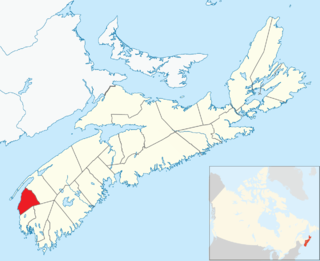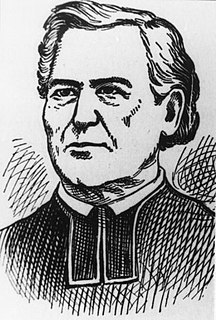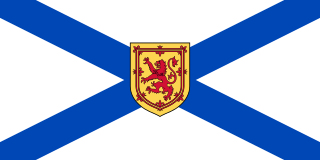
The Acadians are the descendants of French colonists who settled in Acadia during the 17th and 18th centuries, some of whom are also descended from the Indigenous peoples of the region. The colony was located in what is now Eastern Canada's Maritime provinces, as well as part of Quebec, and present-day Maine to the Kennebec River. Acadia was a distinctly separate colony of New France. It was geographically and administratively separate from the French colony of Canada. As a result, the Acadians and Québécois developed two distinct histories and cultures. They also developed a slightly different French language. France has one official language and to accomplish this they have an administration in charge of the language. Since the Acadians were separated from this council, their French language evolved independently, and Acadians retain several elements of 17th-century French that have disappeared in France. The settlers whose descendants became Acadians came from many areas in France, but especially regions such as Île-de-France, Normandy, Brittany, Poitou and Aquitaine. Acadian family names have come from many areas in France. For example, the Maillets are from Paris; the LeBlancs of Normandy; the surname Melançon is from Brittany, and those with the surnames Bastarache and Basque came from Aquitaine.

Acadia was a colony of New France in northeastern North America that included parts of eastern Quebec, the Maritime provinces, and modern-day Maine to the Kennebec River. During much of the 17th and early 18th centuries, Norridgewock on the Kennebec River and Castine at the end of the Penobscot River were the southernmost settlements of Acadia. The actual specification by the French government for the territory refers to lands bordering the Atlantic coast, roughly between the 40th and 46th parallels. Later, the territory was divided into the British colonies that became Canadian provinces and American states. The population of Acadia included members of the Wabanaki Confederacy and descendants of emigrants from France. The two communities intermarried, which resulted in a significant portion of the population of Acadia being Métis.

The Expulsion of the Acadians, also known as the Great Upheaval, the Great Expulsion, the Great Deportation and Le Grand Dérangement, was the forced removal by the British of the Acadian people from the present day Canadian Maritime provinces of Nova Scotia, New Brunswick, and Prince Edward Island — parts of an area also known as Acadia. The Expulsion (1755–1764) occurred during the French and Indian War and was part of the British military campaign against New France. The British first deported Acadians to the Thirteen Colonies, and after 1758, transported additional Acadians to Britain and France. In all, of the 14,100 Acadians in the region, approximately 11,500 Acadians were deported. A census of 1764 indicates that 2,600 Acadians remained in the colony, presumably having eluded capture.

Clare, officially named the Municipality of the District of Clare, is a district municipality in western Nova Scotia, Canada. Statistics Canada classifies the district municipality as a municipal district.

Grand-Pré National Historic Site is a park set aside to commemorate the Grand-Pré area of Nova Scotia as a centre of Acadian settlement from 1682 to 1755, and the British deportation of the Acadians that happened during the French and Indian War. The original village of Grand Pré extended four kilometres along the ridge between present-day Wolfville and Hortonville. Grand-Pré is listed as a World Heritage Site and is the main component of two National Historic Sites of Canada.

Joseph Broussard (1702–1765), also known as Beausoleil, was a leader of the Acadian people in Acadia; later Nova Scotia, Prince Edward Island, and New Brunswick. Broussard organized a Mi'kmaq and Acadian militias against the British through King George's War, Father Le Loutre's War and during the French and Indian War. After the loss of Acadia to the British, he eventually led the first group of Acadians to southern Louisiana in present-day United States. His name is sometimes presented as Joseph Gaurhept Broussard; this is likely the result of a transcription error. Broussard is widely regarded as a hero and an important historical figure by both Acadians and Cajuns.

The Acadians are the descendants of the French settlers, and sometimes the Indigenous peoples, of parts of Acadia in the northeastern region of North America comprising what is now the Canadian Maritime Provinces of New Brunswick, Nova Scotia, and Prince Edward Island, a Gaspé, in Quebec, and to the Kennebec River in southern Maine.
Dudley Joseph LeBlanc, Sr., also known as Coozan Dud LeBlanc, was an American Democratic, Roman Catholic, and Cajun member of the Louisiana State Senate whose entrepreneurial talents netted him a fortune through the patent medicine he invented known as Hadacol. He is also considered the "father of the old age pension" in Louisiana.

Abbé Jean-Louis Le Loutre was a Catholic priest and missionary for the Paris Foreign Missions Society. Le Loutre became the leader of the French forces and the Acadian and Mi'kmaq militias during King George's War and Father Le Loutre’s War in the eighteenth-century struggle for power between the French, Acadians, and Miꞌkmaq against the British over Acadia.

Ste-Anne-du-Ruisseau is a community in Municipalité Argyle Municipality in the Canadian province of Nova Scotia.
Daigle or D'Aigle is a modification of the French surname Daigre. The first appearance of the last-name Daigle in the Americas was in Beaubassin, Nova Scotia in 1727. The last name Daigre originated in France and is likely the surname of peoples migrating from Aigre, France to New France in the Americas during the 16th and 17th centuries. Olivier Daigre (Daigle) is the first Daigre to appear on record in Nova Scotia when he arrived in 1663, and in 1666 when he married Marie Gaudet, daughter of Denis G. and Martine Gauthier. Olivier and Marie had 10 children, including two sons who all lived in the Port Royal and Grand Pre areas of Nova Scotia for three generations until the expulsion of Acadians from Canada by England.
Jean-Mandé Sigogne was a French Catholic priest, who moved to Canada after the Revolution and became known for his missionary work among the Acadians of Nova Scotia.
Noël Doiron was a leader of the Acadians, renown for the decisions he made during the Deportation of the Acadians. Doiron was deported on a vessel named the Duke William (1758). The sinking of the Duke William was one of the worst marine disasters in Canadian history. The captain of the Duke William, William Nichols, described Noel Doiron as the "head prisoner" on board the ship and as the "father" to all the Acadians on Ile St. Jean.
Daniel LeBlanc was an early settler of the Port Royal area of Acadia, and ancestor to many LeBlancs.
Pierre II Surette was part of the Acadian and Wabanaki Confederacy resistance against the British Empire in Acadia. He was born in Port-Royal in 1709 and married in Grand-Pre, September 30, 1732. After the Treaty of Paris in 1763, he was released from a prison in Halifax and settled in Yarmouth County, Nova Scotia.
The Acadian Deputy was a position in 18th-century Nova Scotia, Canada, created by the Nova Scotia Council to represent the interests of an Acadian community to the Council.

Acadian militias were units of Acadian part-time soldiers who fought in coordination with the Wabanaki Confederacy and French forces during the colonial period, to defend Acadia against encroachment by the English. Some other Acadians provided military intelligence, sanctuary, and logistical support to the resistance movement. The Acadian militias achieved effective resistance for more than 75 years and through six wars before their eventual demise. According to Acadian historian Maurice Basque, the story of Evangeline continues to influence historic accounts of the deportation, emphasising neutral Acadians and de-emphasising those who resisted the British. While Acadian militia was briefly active during the American Revolution, the militias were dormant throughout the nineteenth century. After confederation, Acadians eventually joined the Canadian War efforts in World War I and World War II. The most well-known colonial leaders of these militias were Joseph Broussard and Joseph-Nicolas Gautier.










